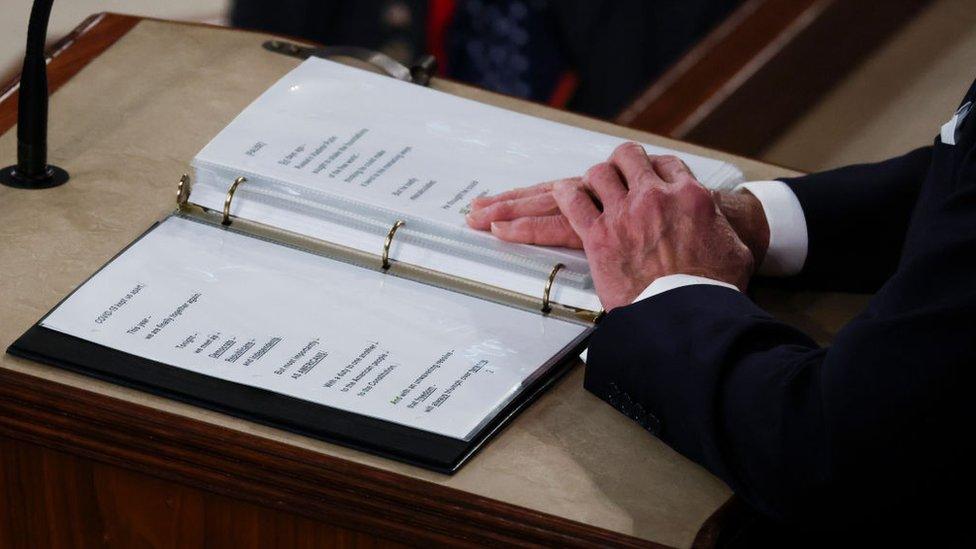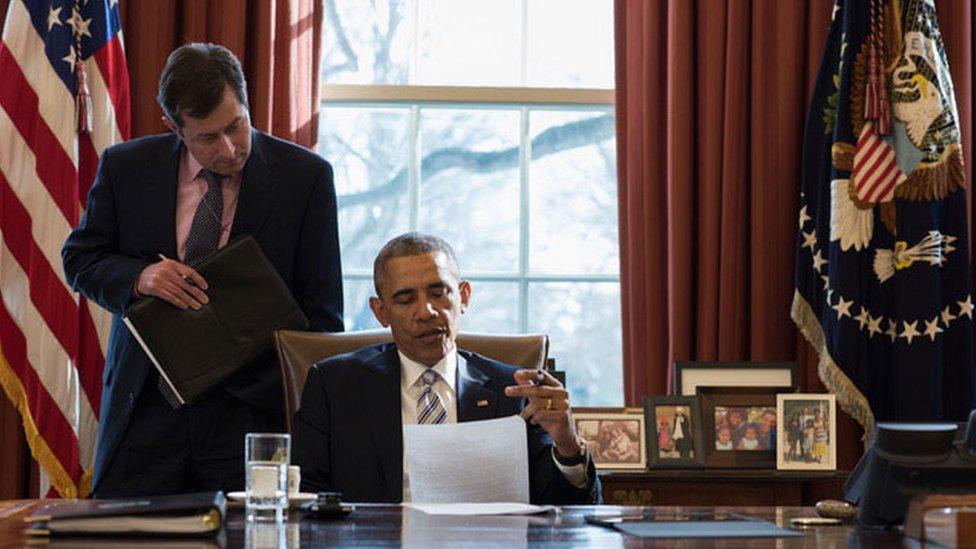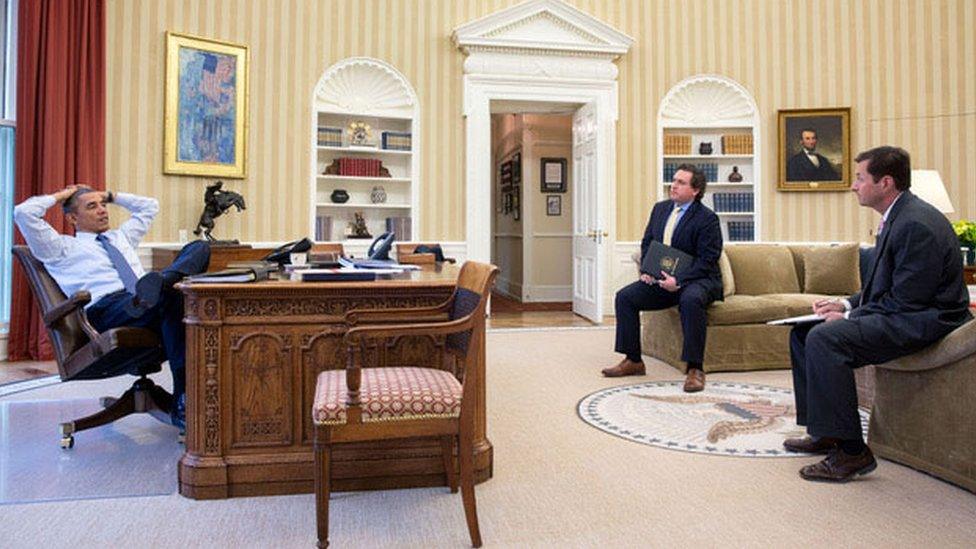Biden's State of the Union: What it takes to write a speech for the president
- Published

As US President Joe Biden puts the finishing touches to his State of the Union address, spare a thought for the behind-the-scenes toil of the White House speechwriters, the hardest-working team in Washington this time of year.
The annual keynote speech, delivered as part of a primetime extravaganza, often attracts the largest audience a US president will receive all year - and everybody in town wants in on the action.
A sentence here could inspire support for a lawmaker's pet project; a paragraph there could help take a government programme off the chopping block.
Cody Keenan knows this all too well. As director of speechwriting in Barack Obama's second term, he was the principal penman behind four State of the Unions.
"It's the biggest speech you'll write all year, but it's also the most frustrating and annoying and time consuming," he says.
"You still feel a sense of pride and relief when it's all over with," he adds.
President Biden's first State of the Union last March came only five days after Russia's invasion of Ukraine. His second, on Tuesday, will be before a new Congress in which Republicans control one chamber.
That likely means the speech will take on a much different tone from last year's one, but Mr Keenan argues it should nevertheless pick up from the core message left behind by Mr Biden in his 2022 State of the Union.
He says the yearly address is like a "built-in reset" to the presidential calendar, because it is delivered near the start of the year and many people who don't follow politics daily tune in to listen.

Barack Obama reviews an address with his deputy director of speechwriting Terry Szuplat
Under Mr Obama, Mr Keenan would begin working on the speech at least a month or two in advance, locking himself inside his windowless workroom beneath the Oval Office for hours on end as the date drew closer.
His office had a coffee maker, gifted to him by National Security Council aides keen to get an item added to the speech one year.
Some West Wing staffers even staked out the bathroom closest to his office and appealed to him for additions when they saw him come out, he recalls.
Ignoring these entreaties, as well as his swelling email inbox, Mr Keenan and his assistant Susannah Jacobs came up with a system: a big smiley face emoji on his door if the speech was going well and he was open to additions, but a skull and crossbones up if the draft was in rough shape and needed no more cooks.
And while Mr Keenan was the lead writer, he always had help - from the remaining half a dozen or so speechwriters on the team, the chief of staff and of course the president himself.
"The real chief speechwriter was always Barack Obama, whether it was the State of the Union or any other big speech," says Terry Szuplat, who helped craft nearly 500 Obama speeches between 2009-17.
"One of the great myths of speechwriting is that it's somehow speechwriters putting words into the president's mouth and it's just the opposite.
"It's speechwriters listening [to] and learning [from] the president every single day, and trying as best we can to provide a draft that captures their voice, vision and values."
Mr Szuplat argues that the State of the Union is a challenge few of these unheralded wordsmiths ever truly relish, a speech that must be given and is inherently high-profile but is rarely ever memorable.
"There's so many items to be addressed that every speechwriter does their best to pull it together in a coherent narrative with a common theme that brings everything together, but it's just so difficult when you're talking about truly everything - a state of the union," the rhetorical handyman says.

Cody Keenan (centre) and Terry Szuplat (right) discuss a speech with President Obama
Ahead of the speech, Mr Obama would sit down with his lead writers and establish an overarching theme for the address. Thereafter, various officials across the government would be called upon to provide their input, grounding the speech in a list of political realities and fiscal constraints. The core writing team would then sort through that list, prioritising certain items and dropping others.
"What makes a great State of the Union is lifting it up out of a list of initiatives, programmes and policies, and trying to offer a coherent, compelling story and vision to the American people," says Mr Szuplat.
Officials in the last White House administration have rarely commented on what it was like writing speeches for President Donald Trump. But, according to the New York Times, speech-writing protocols for Mr Trump's State of the Unions hewed fairly close to Obama-era traditions: assembled with the input of various aides, edited by chief speechwriter Stephen Miller and touted as "100 percent President Trump's own words".
President Biden is notoriously hard to write speeches for, often tinkering with multiple drafts until the last moment and frequently going off script.
His chief speechwriter, Vinay Reddy, was praised last year by an administration official as being "fluent in Bidenese".
Mr Reddy is expected to huddle this weekend with Mr Biden at Camp David, the presidential retreat in Maryland, to craft and hone a final draft. They will be joined by other senior White House aides as well as historian Jon Meacham.
As a showdown looms with Republicans over the federal debt limit, a justice department investigation into Mr Biden's handling of classified information and the anticipated launch of his re-election campaign, they will have to strike the right balance on Tuesday night.
Or as Mr Keenan quips: "Good luck to the speechwriters. I'm glad I'm not the one doing it."
Related topics
- Published5 March 2024
